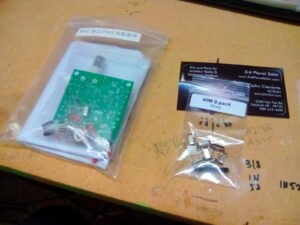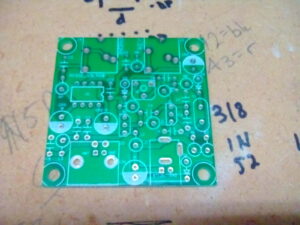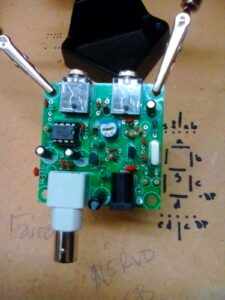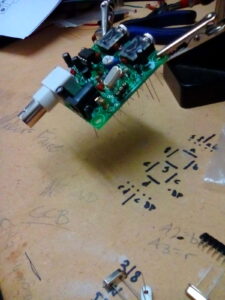It’s Alive!

Okay! I just got to test the receive part of the Pixie II… and it worked!! This is the first fixed frequency radio I’ve ever built or even heard, so I have no basis for comparison, but I can tell you that it worked and that is very exciting for me. I thought it was cool when I built a little ground plane antenna for 2m and then a 5/8 wave whip for my 2m radio, but this is really something. I know I didn’t design the radio, but just the idea that I built it from a bag of parts, put it in an Altoids tin, hooked it up to a dipole antenna that I made from some speaker wire, and heard real, live CW is amazing! To me, this is what ham radio is about. And I can’t wait to finish my next radio project of redesigning and building a variation of the qrpme.com’s Sea Sprite (which is just an improvement on the Pixie II).
Testing Different Frequencies
I went through the crystals from the 8-pack (plus the one that came with the Pixie II) and picked up transmissions on 7.030, 7.040, 7.050, 7.070 and 7.110. The first 2 probably came through the clearest, but 7.110 came through well enough for me to catch some if it. And that’s important since it’s the novice frequency and will probably be the frequency I call on first. There’s a good reference for QRP at QRP Portal. Here’s the calling frequencies chart from their site:
|
40m
|
7.003
|
CW
|
(Japan, daytime only!) | – |
|
7.028
|
CW
|
VK | VK3YE | |
|
7.030
|
CW
|
(Europe) | AC6V, ARRL, GQRP, K3WWP, NJQRP, RU-QRP, VK3YE | |
|
7.035
|
CW
|
(QRP-L) | AC6V | |
|
7.040
|
CW
|
(US) | AC6V, ARRL, K3WWP, NJQRP, VK3YE — now moving to 7.030 | |
|
7.060
|
CW
|
(Europe) | AC6V, NJQRP | |
|
7.090
|
SSB
|
(Europe) | GQRP, NJQRP, RU-QRP | |
|
7.110
|
CW
|
US Novice | AC6V, ARRL, K3WWP, NJQRP | |
|
7.285
|
SSB
|
AC6V, ARRL, NJQRP |
So 3 out of 5 are primarily CW frequencies, 7.070 is PSK31 for regions 1 and 2, and I guess 7.050 is CW and digital modes. While I was able to pick up some transmissions, boy was that confusing! It’s going to really take some work to pick out a single station. They’re all stacked on top of each other! I probably heard 4 or 5 different stations on every frequency I picked up. Fortunately for me, I built a little 1/2 watt audio amplifier I built a little while back that worked great with the Pixie II. Though I was able to hear the stations with regular headphones, the amplifier really helped to pick out the individual stations.
Now I just need to find the time to finish learning CW and play with my new toy. I think a CW decoder may be in order for practice.




